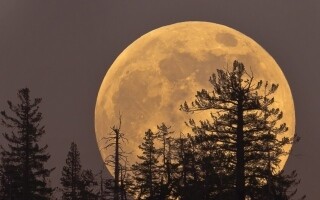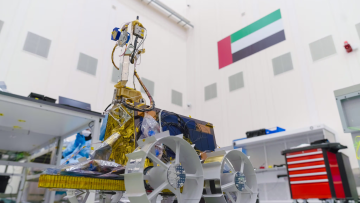
The sky is preparing to welcome the biggest supermoon of the year in a stunning astronomical phenomenon. The moon will reach its peak of fullness and proximity to Earth in a rare sight that will not be repeated for years.
On Wednesday evening, the moon will shine in the sky dome 8% larger than usual and 16% brighter, in a natural light show awaited by astronomy enthusiasts and photographers worldwide. According to the Daily Mail, this exceptional phenomenon is caused by the moon reaching the closest point in its elliptical orbit around Earth, known astronomically as the "perigee," which this time coincides with the full moon, creating a breathtaking celestial tableau.
The Royal Greenwich Observatory confirms that the sight will be visible to the naked eye, while the phenomenon presents a golden opportunity for amateur astronomers to observe lunar surface details using binoculars and telescopes. It is worth noting that this supermoon will be the closest to Earth this year, at a distance of only 357,000 km compared to the average distance of 384,000 km, making it the largest of the year's supermoons.
Looking at the moon shortly after sunset or just before sunrise will provide a breathtaking view, as the moon will appear huge compared to surrounding landmarks. The first full moon in November is traditionally known as the "Beaver Moon," referencing an old folk tradition.
However, this effect is very slight, not exceeding a few centimeters difference between the regular moon and the supermoon. Although this is not the last supermoon of the year—the last one will be on December 4—the moon will not be this size and brightness again until November 24, 2026.
For those wishing to document it, beautiful photos of the moon can be taken with a smartphone, while ensuring the phone is placed on a flat surface to avoid shaky images.
Experts recommend for SLR camera users to use a 250mm lens for better results. For serious amateurs, a 500-600mm lens or a long-focal-length telescope will ensure the most detailed images. Experts also advise using a shutter speed of 1/30 of a second with a low ISO setting for better-quality photos.













